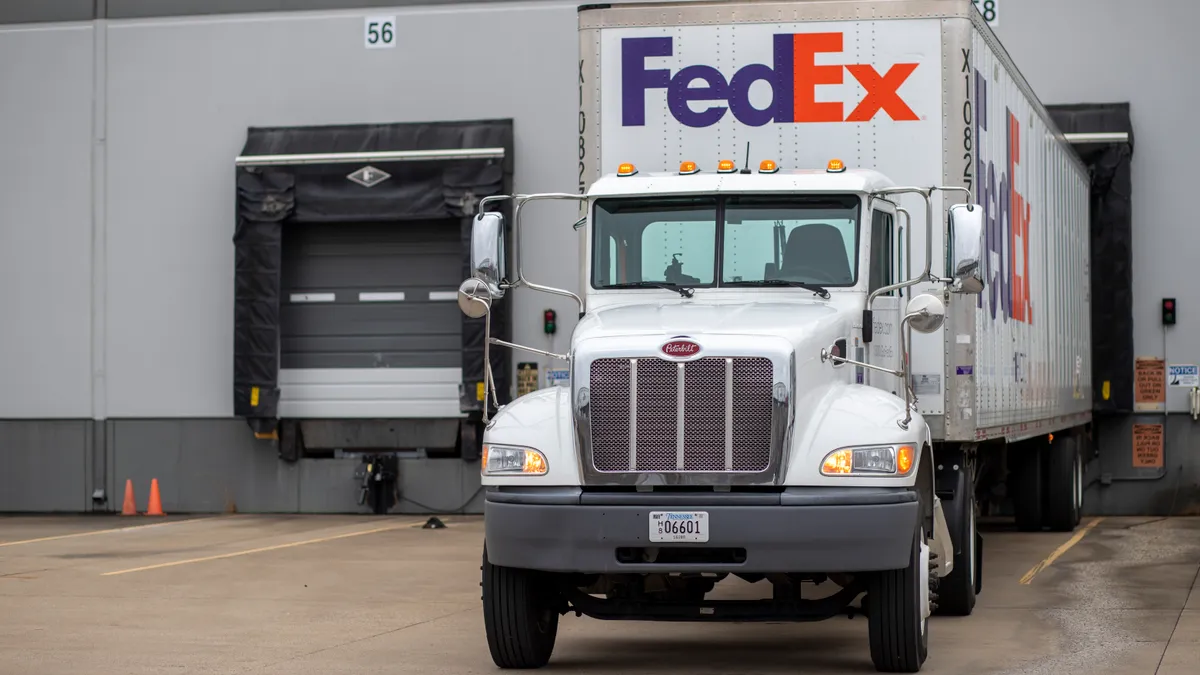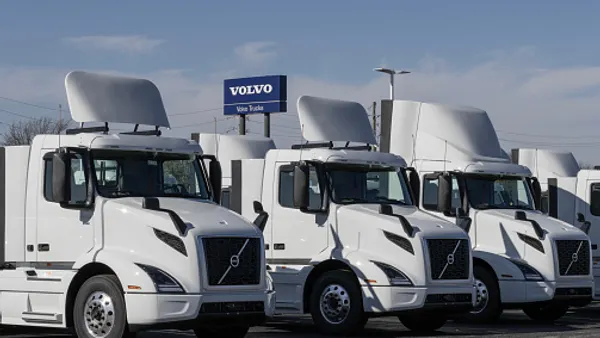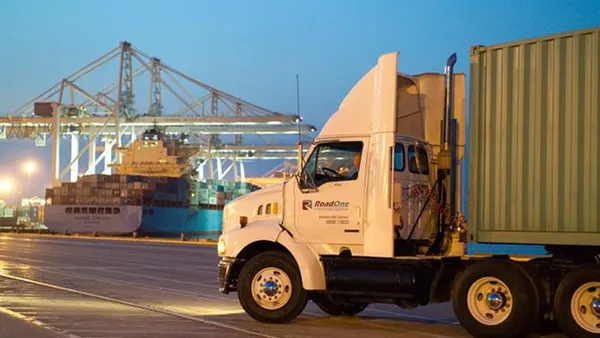Dive Brief:
- Class 8 truck sales came in above 19,000 in September, Wards Intelligence confirmed. The numbers are an improvement from April, when fleets made 4,275 orders, according to ACT Research data, but down 32% from September 2019, according to Wards Intelligence.
- The main reason for the jump in Class 8 sales is the rise in spot rates, said Tim Denoyer, ACT Research vice president and senior analyst. Truckload spot rates have jumped by double digits in a year's time. For dry van, September's rates were up 28.7% from September 2019, according to DAT's Trendlines.
- Demand for trucks is up in the same time period, with shippers seeking carriers in increasing numbers. According to DAT, the van load-to-truck ratio is up 126% YoY, the reefer ratio is up 116% and the flatbed ratio is up 10%.
Dive Insight:
The Class 8 sales numbers indicate fleets are readying for a more vigorous market, after a freight recession began in late 2018 and lasted through the initial stage of the pandemic, Denoyer said.
September's sales show a dramatic turnaround from the weeks following the onset of the COVID-19 pandemic in the United States. Class 8 orders in April were the lowest since September 1995, ACT Research said, and not just because of the pandemic.
Class 8 inventories began a large build in reaction to the freight boom of 2017-2018. A number of the other factors, including more favorable corporate tax policies, led fleets to step up orders, with especially high orders in the autumn of 2018, according to Kenny Vieth, president and senior analyst of ACT Research, who spoke to Transport Dive in May.
After spot rates dropped following the initial phase of panic-buying ended in April, consumers kept picking at the shelves through the summer, depleting inventories. The depleted inventories have to be filled, especially before the holiday season arrives.
Denoyer said this meant the pandemic, which has thrown the nation into a sudden recession, is also the reason the trucking economy is coming out of its freight recession, and the reason OEMs are getting more orders.
"The pandemic accelerated the recovery in the freight cycle," said Denoyer.
The pandemic's ill effects early on led to layoffs in the transport sector. Oddly enough, those layoffs of about 100,000 freight transport workers in the first half of 2020 led to a capacity crunch, because fleets are having trouble getting their personnel numbers back to normal levels, Denoyer said.
It also means the fleets have to buy new trucks even as they struggle to recruit enough drivers. The spot rates will help lure drivers back, Denoyer said, and so will new models.
"A nice, new fuel-efficient truck is a nice way to entice them," said Denoyer.









